Effects of Globalization
EC 380 - International Economic Issues
2025
Context
What is it?
Globalization
The growing interdependence of the world’s economies, cultures, and populations, brought about by cross-border trade in goods and services, technology, and flows of investment, people, and information
The term is used broadly. We focus on international trade and some of the investment flows among advanced economies, mostly focusing on the United States.
Big Picture
There are wide-ranging effects of globalization, but all lessons thus far culminate to these points:
- Complex and politically charged
- As with major technological advances, globalization benefits society as a whole, while harming certain groups
Understanding the relative costs and benefits can pave the way to alleviating problems while sustaining the wider payoffs
History Lesson
Globalization took off in the 19th century
Following centuries of European colonization and trade activity, first wave of globalization moved forward by steamships, railroads, the telegraph, and refrigeration
It came alongside increased economic cooperation. This initial trend eventually waned and crashed in the horrors of World War I
This was followed by post-war protectionism, the Great Depression, and World War II
History Lesson
After WWII, the United States led efforts to revive internatinoal trade and investment under negotiated ground rules
Bretton Woods Conference (1944): Series of agreements led to exchange rate system (lasted until 1971);
International Bank for Reconstruction and Development (IBRD), now known as the World Bank
The International Monetary Fund (IMF)
Two years later, 23 nations including the UK and US began reducing trade barriers, leading to the General Agreement on Tariffs and Trade (GATT), which began in 1948.
We are now in the Second Wave of Globalization, though it is been marked by periodic downturns and mounting political scrutiny
Era of Trade Liberalization
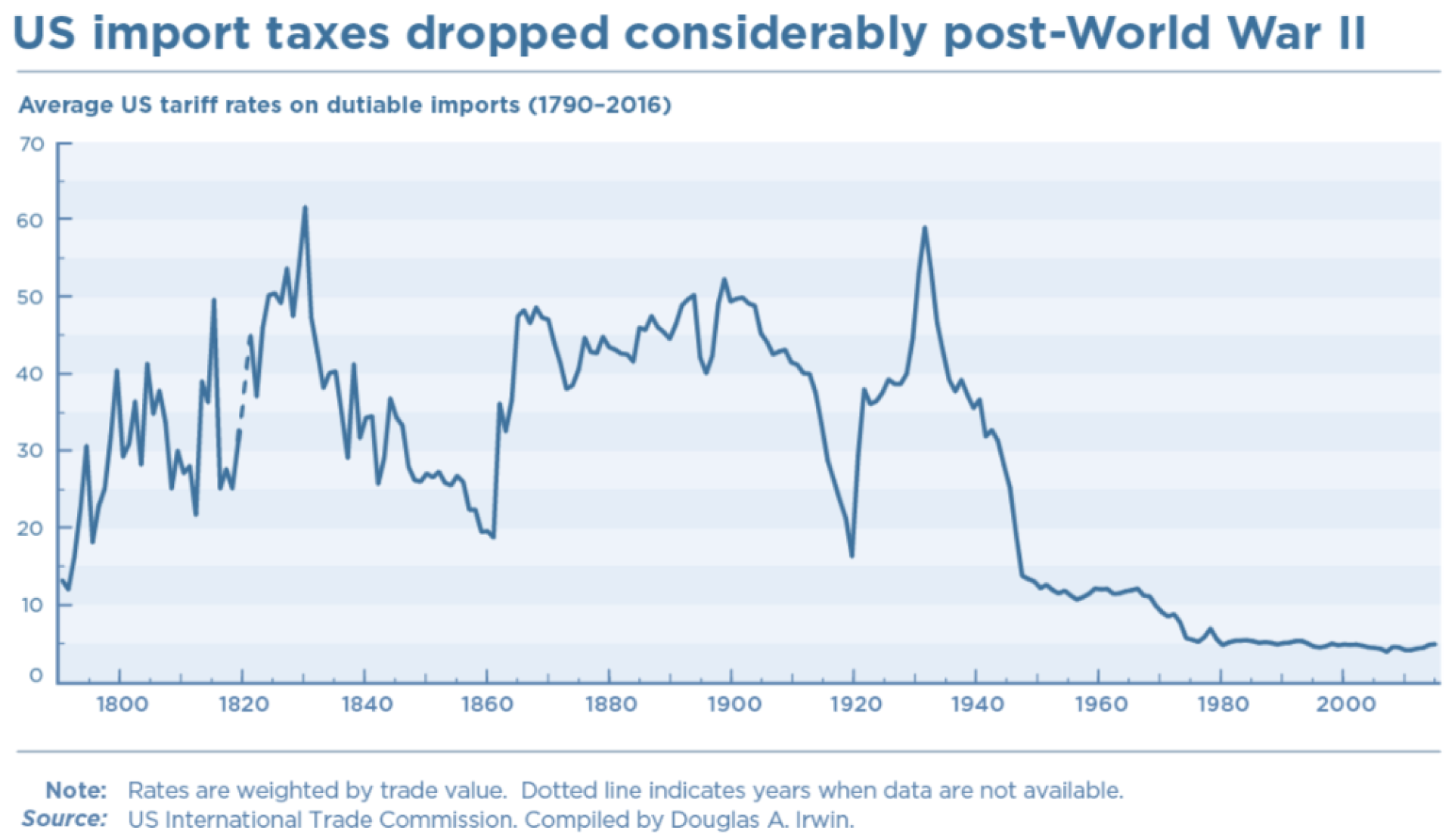
Global Value Chains
Definition
Global Supply Chains are production networks that assemble products using parts from around the world (known as intermediate goods)
This has resulted in the presence of intermediate inputs increasing within trade, relative to the final good flows
Today, 80 percent of world trade is driven by supply chains run by multinational corporations
Trade in intermediate goods is now nearly twice as large as trade in final goods and is specially important in advanced manufacturing industries
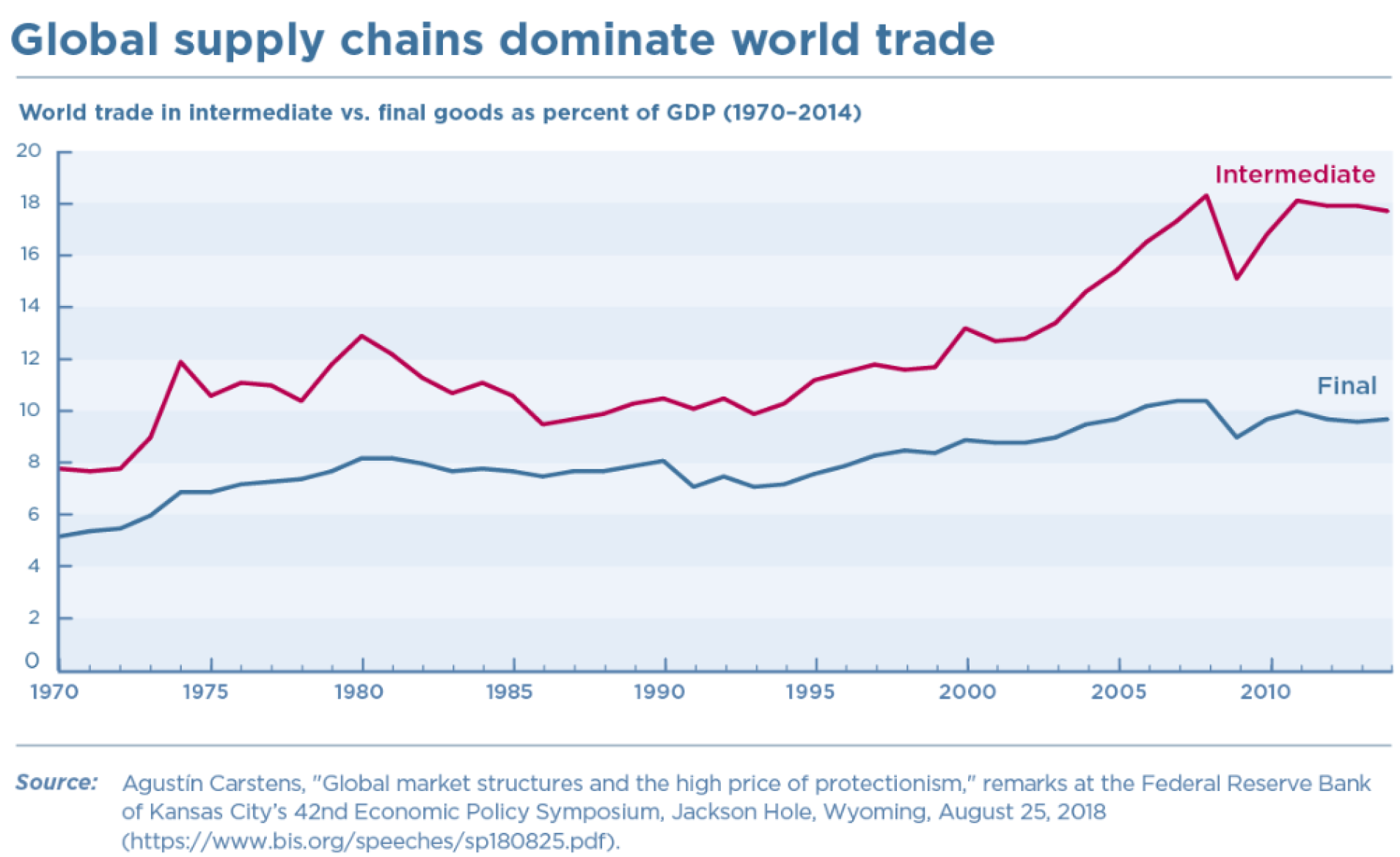
Financial Integration
Separate from Trade in Goods & Services
Global financial integration is a much-debated but important topic. Here is a quick summary:
- US flow of foreign investments has been declining since 2008
- Many countries have large international financial flows or investments, consisting of assests and liabilities (FDI, securities, and debts)
- Countries have become susceptible to sudden stops and surges in these flows, leading to greater economic volatility for developing nations
Globalization & Financial Integration
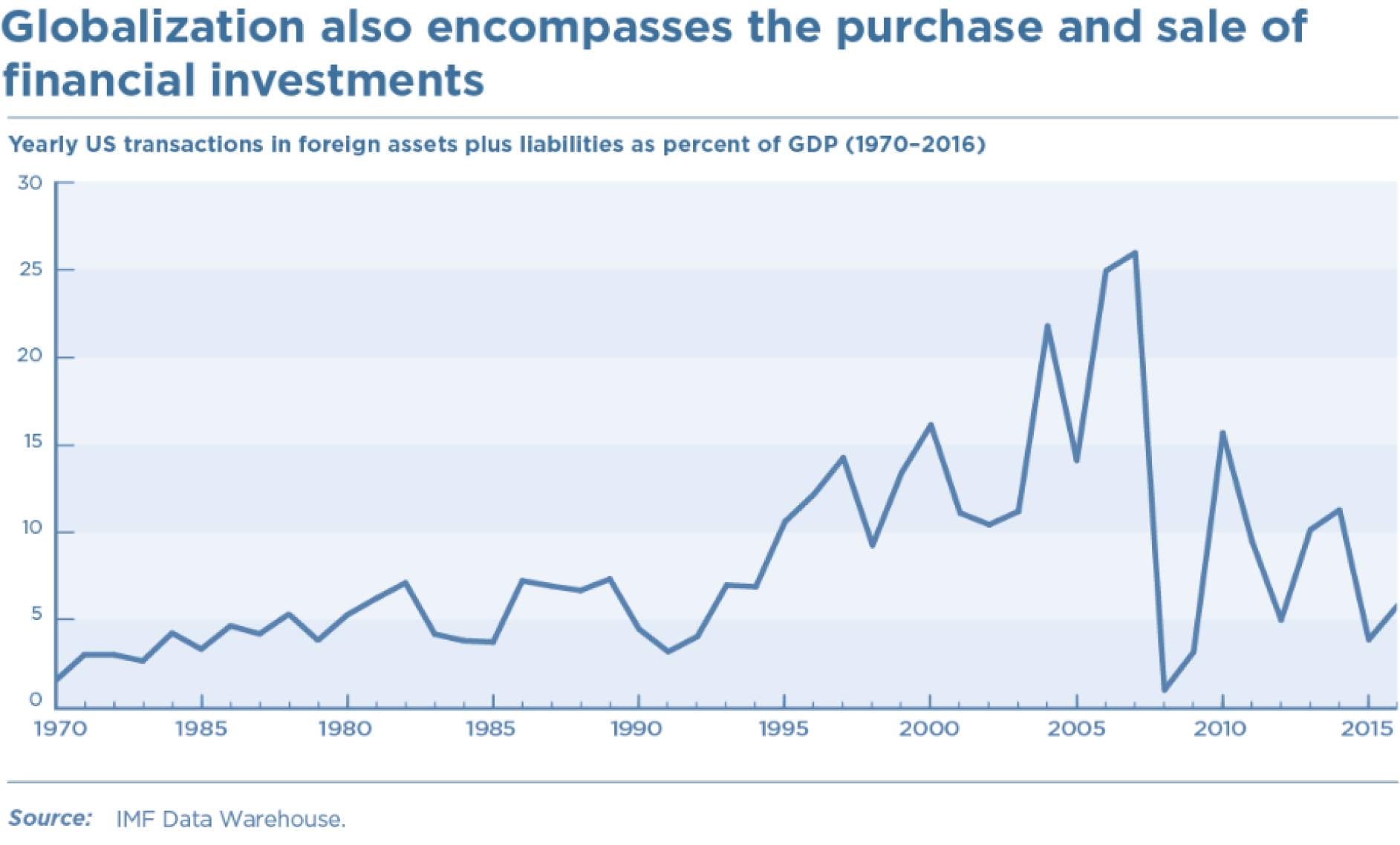
Globalization & Financial Integration
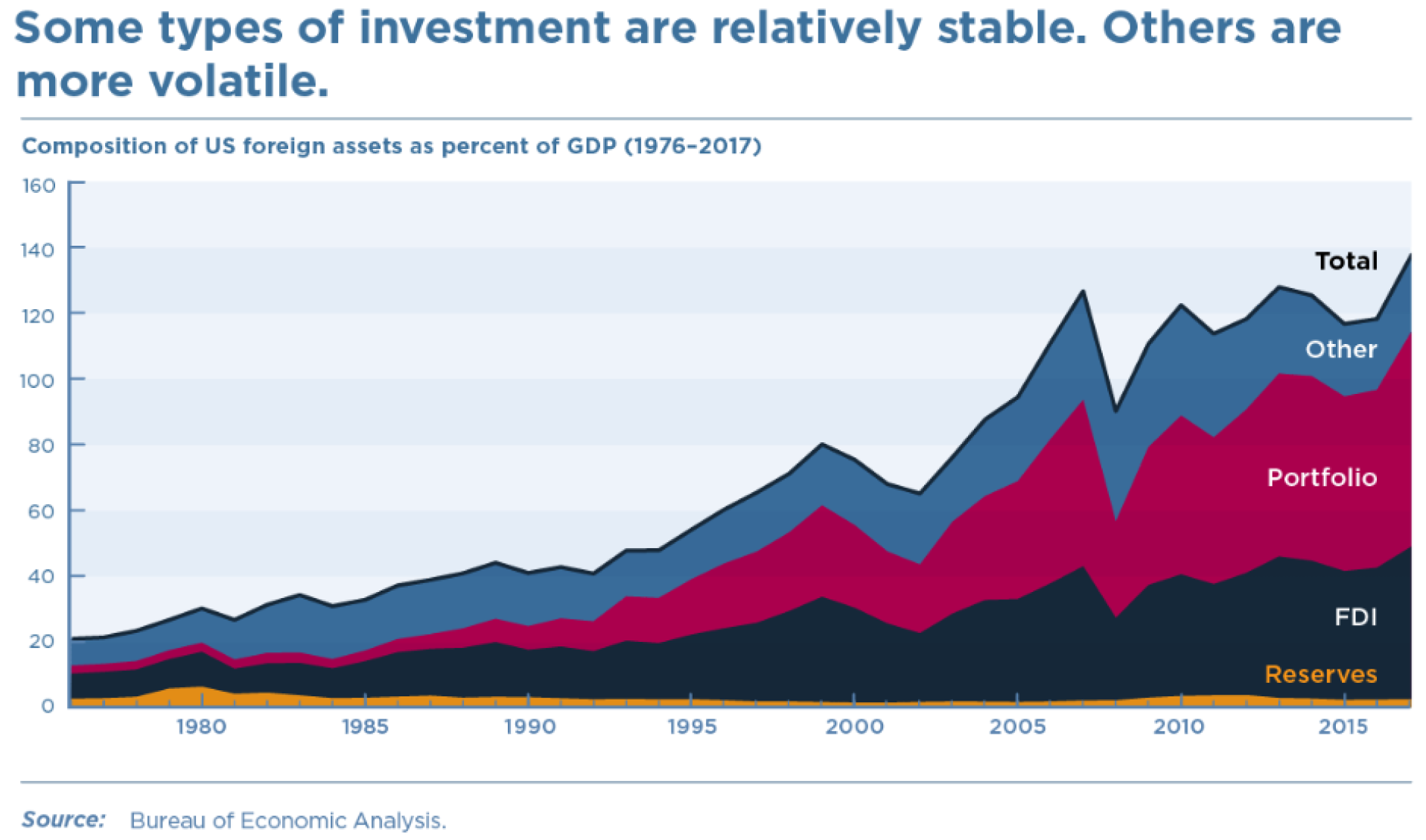
Globalization & Financial Integration
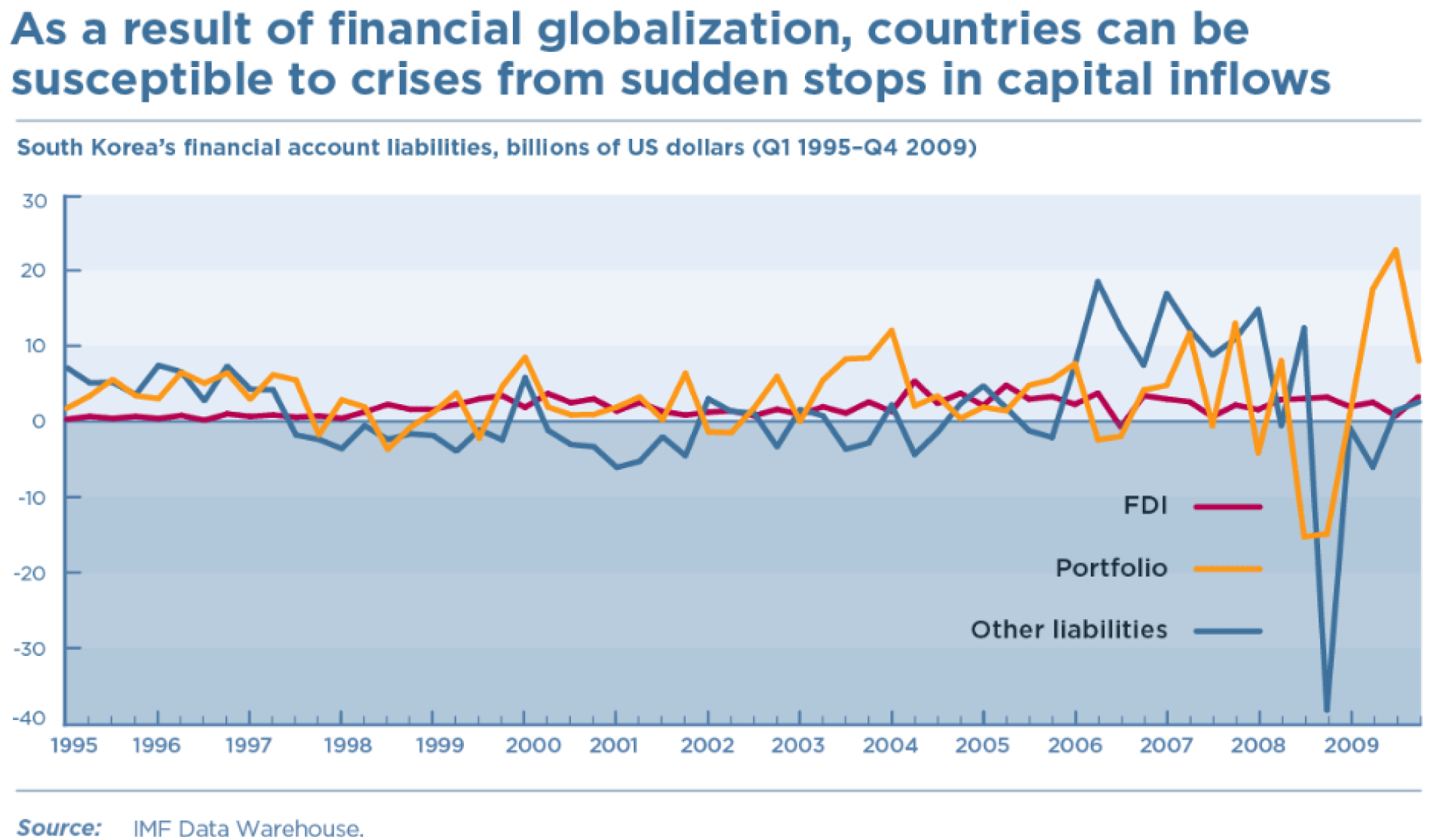
Goal of Globalization
The US established a global economic order governed by mutually accepted rules and overseen by multilateral institutions
The idea has been to create a better world with countries seeking to cooperate with one another to promote prosperity and peace
Free trade and the rule of law were mainstays of the system, helping to prevent most economic disputes from escalating into larger conflicts
Key Institutions
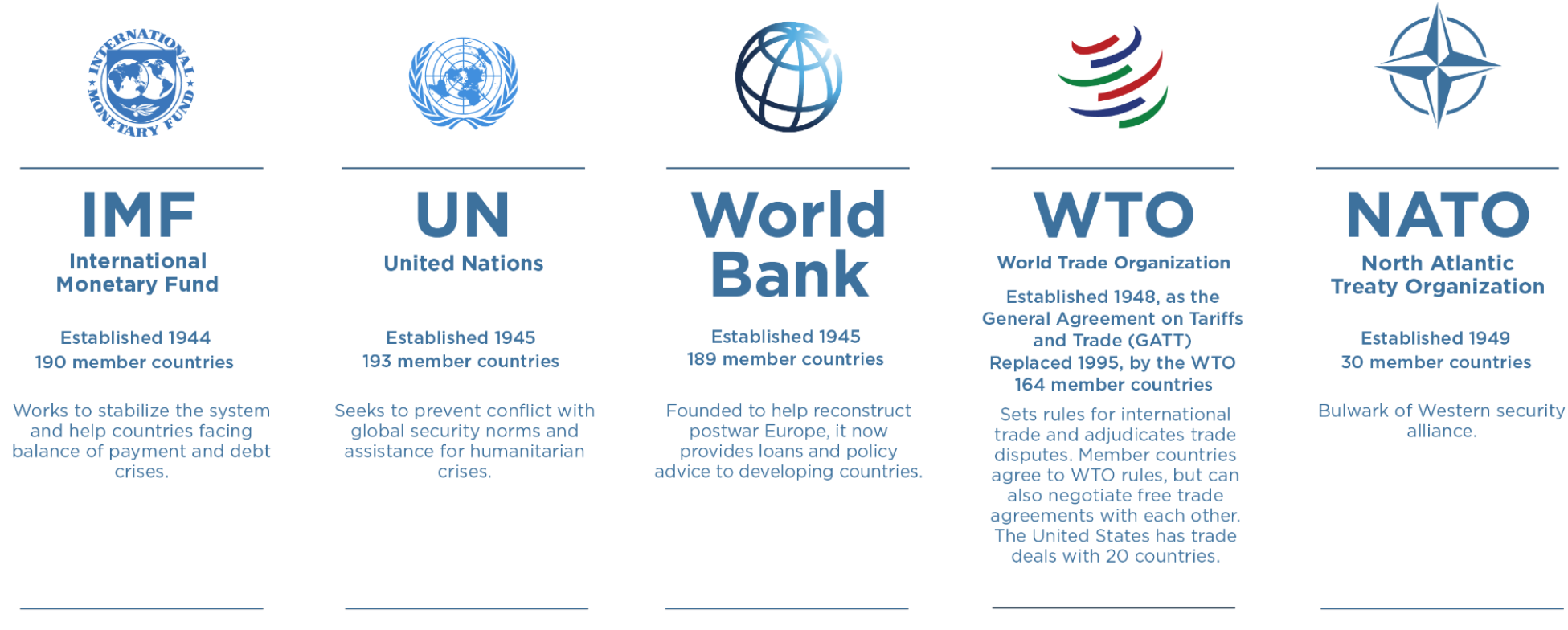
Globalization Perspectives
Effects of Globalization
We have covered a lot of this so far, having reviewed the theory and some empirical literature.
To summarize what we have seen and its relation to globalization:
More goods at lower prices through exploiting comparative advantages
Scaled up enterprises, multinationals, allowing for large-scale tchnological developments
Better quality and variety of goods, as a result of increased product-level competition
Supports new job opportunities but also contributes to job displacement
Globalization & Jobs
It does not significantly change the total number of jobs in the economy
- Job numbers are primarily driven by business cycles, monetary and fiscal policies
Some Peterson Institute studies have found that 156,250 US manufacturing jobs lost on net each year between 2001 and 2016 from expanded trade in manufactured goods
This represents less than 1% of the workers laid off in a typical year
Globalization & Jobs
Low-wage workers in certain regions are most affected. Many of them also face lower earnings or have dropped out of the workforce
Bigger factors than trade that drive job displacements are labor-saving technologies, like automated machines and artificial intelligence
Better-paying positions have opened up in manufactured exports
- Especially in high-tech areas, such as computers, chemicals, and transportation equipment
Globalization & Income
There has been a decline in global income inequality but it has increased in the US
Globalization helped narrow inequality between poorest and richest people in the world, with the number of people living in extreme porverty having been cut in half since 1990
Most scholarly work holds that globalization contributed marginally to rising US wage inequality (somewhere from 10% to 20%)
Globalization, Income, and the US
Leading Explanation: Technology has reduced demand for low and middle-wage workers and increased demand for high-skilled, high-wage workers
Countries exposed to globalization have alleviated inequality to different degrees through tax and welfare systems
The US has done the least among advanced economies to mobilize government policies to reduce inequality
Globalization & Entry of Firms into US
Foreign-owned companies that do business in the US have hired Americans at a faster rate than US private employers between 2007 and 2015
One in five American manufacturing workers is now employed by a foreign-owned company operating in the United States
They also pay better, do more research and development, export more, and invest more than the average US firm
The same is true of US firms that invest abroad
It is more of an international firm advantage story
Public Views
How do Americans feel about Globalization?
Listening to political debates around this can cause confusion
Not surprisingly, polls vary widely depending on how and when the question is asked
Can be a hard sell to the general public because the benefits are widely distributed and not easily understood, while the costs are more straightforward to visualize
All of this confusion is not helped by the US’s inaction at helping temporarily displaced workers
Public Views
An OECD Study suggests policymakers have done little to help workers adjust at a time when the wealthiest Americans have gained the most
In general, younger people are more supportive of free trade, as most have never known a world without the current system
Before 2016, Republicans generally favored US trade deals and Democrats generally voted against them
The first Trump administration canceled the TPP, threatened withdrawing from NAFTA, the Korea-US Free Trade Agreement (KORUS), and the WTO
They also pushed for more power to impose tariffs
Policy Action
Some crucial areas that economists have proposed the United States focus on are:
Invest in better and more inclusive education
Give all displaced workers sufficient financial and administrative support
Address growing income inequality thorugh the tax system and spending programs
Make sure the healthcare system doesn ot impede workers from finding new jobs
Coordinate with allies to confront trade abuses
EC380, Lecture 05 | Globalization